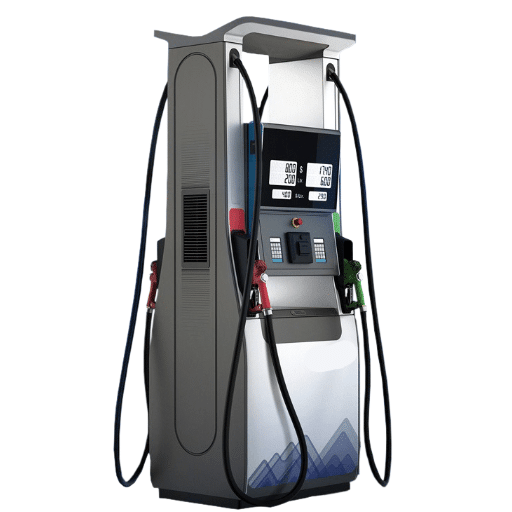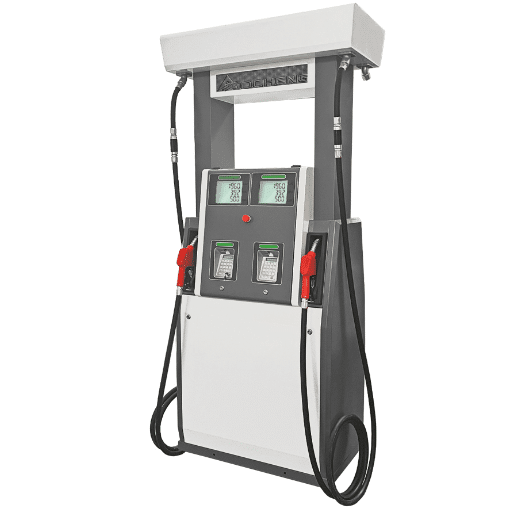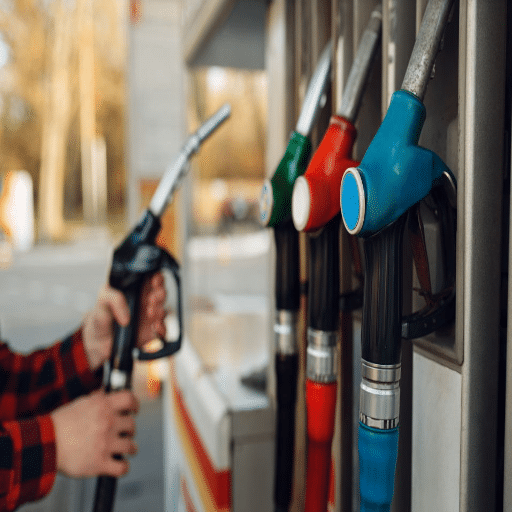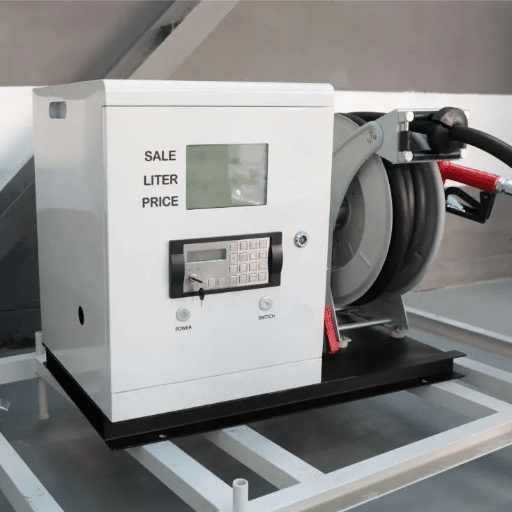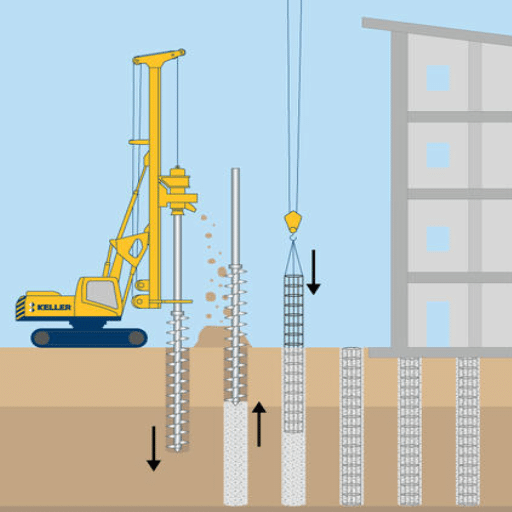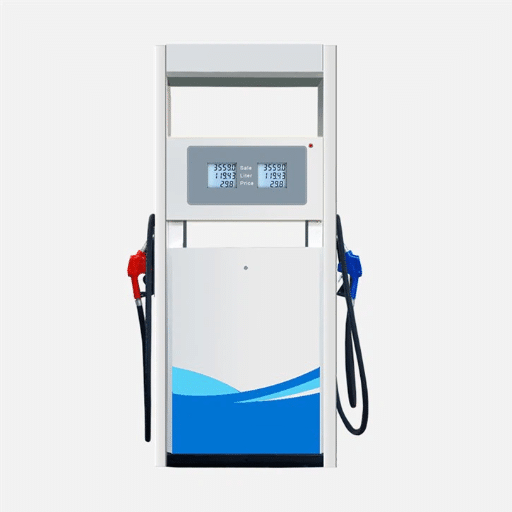In many instances, refueling a vehicle is almost like a routine task that passes quickly. But have you ever stopped to think about the intricate systems working behind the scenes of a gas dispenser? These essential machines found in gas stations worldwide are much more than simple devices used to dispense fuel; rather, such systems are engineered to harmonize among considerations of efficiency, accuracy, and safety. The article explores the fascinating world of fuel pumps and retail fuel solutions: how they work and the technology that drives their functionality and fits into the modern energy ecosystem. So, whether we are curious consumers or industry players, let’s embark on this journey through the intricacies of gas dispensers, uncovering some innovations that will pave the future of fuel retail.
Overview of Gas Dispensers
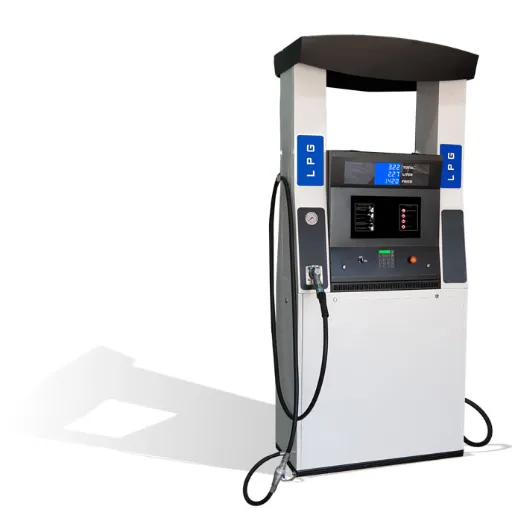
Before any further discussion, one thing must be understood: the term gas dispensers refers to fuel pumps. They are a set of devices used to transfer fuel from storage tanks into the vehicles. Thus, gas dispensers measure and dispense the appropriate amounts of gasoline or diesel, with the intent that they are accurate and efficient in every single instance. Hence, most modern gasoline dispensers are equipped with user-friendly interfaces, card-payment options, and safety mechanisms that prevent spilling and leaking. Namely, their countdown process of refueling is a quick and safe/disposable one for the consumer.
What is a Fuel Dispenser?
The fuel dispenser is a commonly noticed machine at a gas station, working to pump gasoline, diesel, or other types of fuel into vehicles. It is corroborated by mechanical and electronic systems used to calculate and sell exact amounts of fuel. Modern-day dispensers incorporate high-technology systems that provide digital display, payments, and safety to avoid spills or overflows. Their primary function was to ensure rapid and safe refueling of vehicles, thus considering consumer convenience and environmental aspects.
How a Fuel Dispenser Works
Fuel dispensers work by moving fuel from an underground tank to a motor vehicle tank through a pumping arrangement. When a user keys in the desired fuel grade, the pump starts and draws fuel through a pipeline. The dispenser has a flow meter within it that records the exact amount of fuel dispensed to guarantee precise delivery. The nozzle has a small switch that perceives pressure changes in the hose and then halts further fuel flow when the tank is full, so it does not spill. Furthermore, fuel dispensers nowadays come with electronic controls and digital interfaces to correctly display prices, accept payments, and monitor the operation of the dispensing process in real time. Such safety and efficiency systems ensure that dispensing fuel is a reliable affair.
Types of Fuel Dispensers
Different types of fuel dispensers are installed depending on their specific workings or the type of fuel being dispensed.
Single-Product Dispensers
Single-product dispensers pump only a single type of fuel, such as gasoline or diesel. Usually, they are installed in less busy gas stations or industrial locations where only one type of fuel is ever needed.
Multi-Product Dispensers
Multi-product dispensers pump and deliver different types of fuels in one unit. They are common at modern gas stations, offering gasoline, diesel, ethanol blends, or even compressed natural gas (CNG) and electric charging.
High-Flow Dispensers
Being the type of dispenser with very high flow rates, these are implemented in commercial or industrial applications where time is maximized to fill huge vehicles, such as trucks or buses.
Fleet Fuel Dispensers
Being prepared for the corporate or government vehicle fleet, these dispensers are usually equipped with tracking systems that track fuel consumption for each vehicle to optimize operational efficiency.
Dispenser-based fuel systems have important perceptions according to the job outline to streamline refueling and operations. Some advanced dispensers also incorporate additional techniques, such as vapor recovery or payment integration, for better functionality.
Components of a Fuel Dispenser
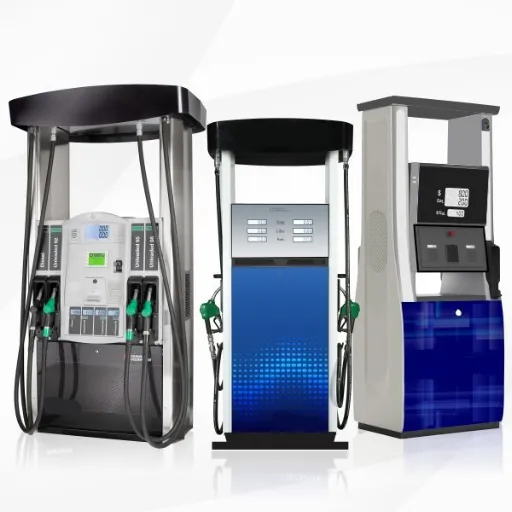
- Metering System: The metering system measures whatever quantity of fuel dispensed for accurate filling.
- Pump Mechanism: The pump transfers fuel from storage tanks to the dispenser and then into the vehicle or container.
- Hose and Nozzle: Used to carry fuel to the vehicle or equipment, often with automatic shut-off safety on the nozzle.
- Display Panel: This shows important items such as how much fuel was dispensed, how much it cost, and the price for one unit.
- Control System: Operates the functioning of the dispenser and initiates or halts the fuel flow.
- Safety Features: Include pressure relief valves and emergency shut-off switches that assist in averting accidents.
- Payment Integration (Optional): Offers payment options through card readers or keypad interfaces.
Together, all this equipment ensures fuel delivery is safe, accurate, and efficient.
The Role of Nozzles and Hoses
Distributors are critical components of an equipment flow system that delivers fuel from a dispenser to a vehicle. The nozzle, equipped with a trigger, controls fuel flow, dispensing exactly the amount a user requires. Modern nozzles have an automatic shut-off to prevent overfills and leaks. On the other hand, hoses need to be able to withstand flexibility against challenging environments, being one of them. If built of good materials, the integrity of the hose can be better maintained, lessening the risk of wearing down to leaking or becoming an environmental hazard. Nozzles and hoses together make sure to keep a solid connection between the dispenser and the user, with the foremost safety and efficiency standards. Hence, they offer convenience and safety against any potential hazard concerning fuel.
Understanding the Fuel Meter
The fuel meter plays an especially crucial role in precisely measuring the volume of the fuel discharged. It utilizes mechanical-type or electronic-type mechanisms that function to the trade’s end to ensure reliability and transparency of the transaction. Modern fuel meters employ many new technologies such as flow sensors and digital displays for giving accurate information in real-time with very minute or zero errors. They are calibrated to standards set by the regulatory body to reduce any discrepancies, thus ensuring customers get the exact amount of fuel they pay for. Proper maintenance must be ensured to keep the fuel meter in optimum working condition, which will guarantee this performance and a longer lifetime.
Fuel Dispenser Installation and Maintenance
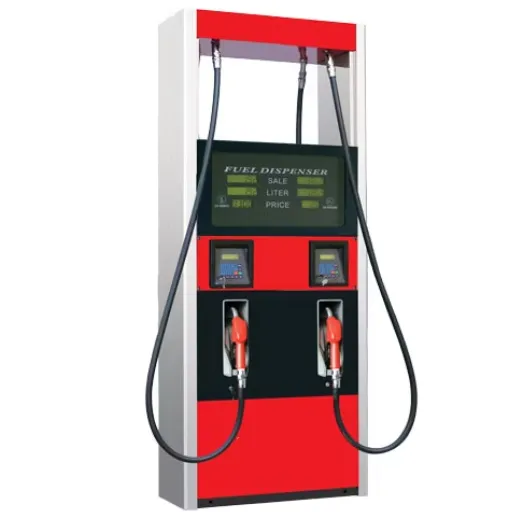
Proper installation and maintenance of fuel dispensers ensure safety, operating accuracy, and sustained performance of the machine. The manufacturers’ instructions, together with local regulations, must be followed during installation. This would entail placing the dispenser on a firm base, securely connecting it to the power and fuel supply lines under proper torque, and testing all of its components for correct functionality.
Periodic maintenance to be performed consists of cleaning the dispenser, checking the hoses and nozzles for wear, inspecting all seals and connections for leaks, and calibrating whenever necessary to verify the accuracy of measurements. Any faulty parts must be replaced at once. Installation and maintenance should be carried out by licensed persons so as to obtain compliance and ensure optimum performance.
Installing a Fuel Dispenser
Installing a fuel dispenser should start with good planning and respect for industry standards and safety regulations. Below are the detailed steps that will guide the installation process:
Site Preparation
Start site preparation for installation. The area must be level, well-drained, and free of any debris. The location should follow all local codes for fire safety and environmental protection. Dispensers should typically be installed at a safe distance from buildings or possible ignition sources. According to NFPA standards, the site should have appropriate grounding to prevent electrical hazards.
Foundation and Base Setup
Set a concrete foundation that is strong enough to bear the weight of the dispenser and withstand the weather. Generally, concrete pads are used, and these must be set according to the dimensions recommended by the dispenser’s manufacturer. A foundation set properly provides stability and reduces the chances of damage or misalignment.
Electrical and Piping Connections
Wiring installations and fuel pipe work should be performed with extreme care as they form part of the installation. An electrician licensed with local laws should carry out all electrical connections. Use explosion-proof conduit and fittings to make the installation safe in a flammable environment. While installing piping, ensure it is done using materials certified for use under established test conditions for leakage and corrosion resistance; perform pressure tests to verify the connections.
Safety and Spill Containment Systems
Safety systems and spill containment measures should be installed so that the environment can be conserved in the event of a leakage of fuel during operation. This may include underground under-dispenser containment (UDC) systems and emergency shutoff valves. Several jurisdictions demand that these systems must comply with a given regulation, such as EPA regulations, to prevent groundwater contamination.
Mounting Fuel Dispenser
The fuel dispenser should be carefully mounted in the position on the prepared foundation. Never over-tighten the bolts, as this could cause damage to the dispenser frame. Connect the fuel dispenser to fuel lines and electrical systems as per the manufacturer’s instructions.
Calibration and Testing
Calibration of the dispenser after installation is needed to deliver fuel accurately. Certified testing equipment is used to ensure the dispenser meets industry standards. After calibration, perform a full functional test of all components, including nozzles, hoses, and electronic systems. This will confirm that these items operate as they should.
Compliance Check and Final Inspection
Before beginning regular operations, check the whole installation for compliance with local, state, and federal laws. Inspect by an authorized inspector and have the setup approved. This stage becomes very crucial in laying proper documentation and certification.
Operator Training
All operators and service personnel shall be trained on the correct usage of the dispenser. They should be instructed on how to perform routine inspections, link clues to potential faults, as well as arrange an emergency response concerning spills or equipment failure.
Following the outlined procedures while simultaneously maintaining an active awareness of the present laws and regulations, along with advances in dispenser technology, will ensure that fuel dispensers are installed in utmost safety and efficiency and function optimally throughout their operational life.
Routine Maintenance for Gas Dispenser
Gas dispenser routine maintenance is critical to ensuring safety and performance, along with compliance with industry standards. It involves the cleaning and inspection of dispenser components such as nozzles, hoses, and filters on a regular basis to avoid obstruction or contamination. It should also be ensured that connections and seals are securely fastened and undamaged to prevent any leakage. These dispensing machines should be watched for recalibration at times so as to ensure accurate fuel measurement and a lesser loss of fuel.
Moreover, look for indications of wear and tear among mechanical and electronic parts such as display screens and control panels. Preventive maintenance activities are carried out monthly and annually, as per manufacturers’ recommendations or industry standards. Correct any faults such as fuel leakage, equipment failure, and error codes detected at the earliest stage so that a minor fault does not pose as a major one.
Keeping track of maintenance activities helps to understand the trends in performance, identify recurring problems, and ensure compliance with the regulations. Working with all certified technicians for inspections and repairs helps increase the men’s lives and reliability of the gas dispensers and ensures continuous and safe operation.
Upgrading Your Gas Dispenser Equipment
Updating gas dispenser hardware improves work efficiency, adheres to industry standards, and creates a better experience for the customer. Begin by evaluating your current equipment to determine which piece is outdated and no longer serves operational purposes. Upgrades can involve the installation of EMV payment systems for greater security, media displays to promote advertising opportunities, or smart technologies that ease data management and real-time monitoring.
Make sure that new equipment is compatible with existing infrastructures and is scalable enough to accommodate developments in the near future. Energy-efficient equipment can lower your operational costs in the long run. When dealing with manufacturers and service providers, you should select those whom you trust and can guarantee the delivery of products and installation services. It’s equally important to ensure that staff are trained to work with new systems so that your upgraded equipment achieves full functionality with ease of operation.
Types of Fuel and Their Applications
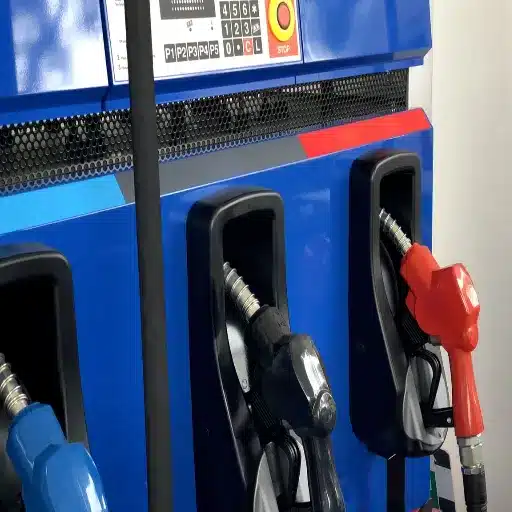
| Fuel Type | Primary Applications | Key Characteristics |
|---|---|---|
| Gasoline | Automobiles, motorcycles, and other small engines | Provides rapid and efficient exothermic energy |
| Diesel | Heavier trucks, buses, and machinery | Increased power and efficient fuel consumption |
| Natural Gas | Power generation, heating, and some vehicles | Considered a greener alternative with reduced carbon emissions |
| Propane | Residential heating, cooking, and small engines | Multipurpose energy source with wide applications |
| Electricity | Electric vehicles and renewable energy systems | Highly efficient and environmentally friendlier |
Each type of fuel has its specific advantages and best-use-case applications, depending upon the requirements for energy and environmental considerations at hand.
Gasoline vs. Diesel Fuel Dispensers
Such fuel dispensers operate with certain distinct characteristics according to the requirements imposed by each class of fuel. Gasoline dispensers work for lighter fuels having lower viscosity, and usually have high flow rates, as passenger vehicles generally refuel more frequently. Diesel dispensers are designed for high-viscosity fuels and usually come with larger nozzles suitable for heavy-duty vehicles like trucks and buses.
On the aspect of efficiency, exigencies of commercial refueling have often led diesel pumps to supply greater pumping power. Industry data puts gasoline’s flow rate often at around 10 gallons per minute, while diesel dispensers can exceed 15 gallons per minute in commercial settings. Also, in order to prevent an accidental filling of a gasoline-only vehicle, diesel nozzles have a bigger diameter. Ensuring safety in the filling process is thus attained.
Further down, materials present another differentiation course within dispenser systems. Diesel fuel dispensers need special kinds of seals and hoses capable of withstanding the denser and more lubricating nature of diesel fuel, while gasoline dispensers are concerned with those parts that can resist volatile fumes. These peculiarities further stress the importance of using the correct system for specified fuel types to guarantee proper performance and safety.
Portable Fuel Solutions
Storing, moving, and using fuel for various industries and personal applications, portable fuel solutions would have changed the complete system. Making the system convenient and safe to move, the types of portable fuel tanks may have to service a gamut of needs; such needs include agricultural specialists, construction sites, and emergencies.
Modern portable fuel tanks usually make use of some of the best materials, like polyethylene or steel, for durability and corrosion resistance. An example would be the tanks of high-density polyethylene, which are very light yet durable, thereby making it easy to carry these around with assurance of reliability for the long haul. On another note, a number of these portable fuel tanks are equipped with a pump, hose, and nozzle for transferring fuel from one source to another.
Market Growth: According to recent industry data, an increase has been reported in the demand for portable fuel containers and is expected to register a CAGR of almost 4.5% during 2023-2028. This increase is attributed to the high penetration of portable solutions in remote locations and refueling on the go in such areas as mining and outdoor event management.
Now, safety features in modern portable fuel systems are at the top of the list. Spill-proof designs, internal venting systems, and auto-shutdown features have practically eliminated spills and accidents. Also, certification and regulations ensure these systems’ compliance with strict environmental and safety guidelines (EPA and CARB standards).
Combining portability, safety, and technology has made portable fuel solutions imperative to an array of applications. Changes in standards are the key to meeting the ever-changing demands of commercial and personal users in this increasingly time-oriented world.
Specialty Fuels: Kerosene and Marine Applications
Kerosene Applications
Kerosene happens to be a really convenient type of fuel that can currently be used for heating and lighting purposes or in the absence of this energy in remote areas. It is heavy with energy, thus coming in handy to operate a smaller-than-usual portable heater or lamp. Kerosene is, in fact, used as fuel for aviation in general because it can perform well under a large temperature gradient. Considering the recent market studies, however, kerosene demand globally remained stable within their countries due to its reliability and cheapness, despite the advent of potential alternative sources of energy.
Marine Fuel Applications
The special types of fuel are designed to suit the particular needs of a marine engine, providing efficiency and meeting environmental regulations. Common types of fuel with application in the marine industry include MGO and VLSFO-fuel: Very Low Sulphur Fuel Oil, in accordance with IMO sulfur cap regulations limiting fuel sulfur to 0.5%. They thus reduce sulphur emissions that can adversely affect air quality in port cities and coastal areas. The maritime fuel market is caringly forecast to upholstery with gradual growth while coming with fuel formulations that enhance efficiency and reduce environmental footprint.
Compliance and Safety Standards
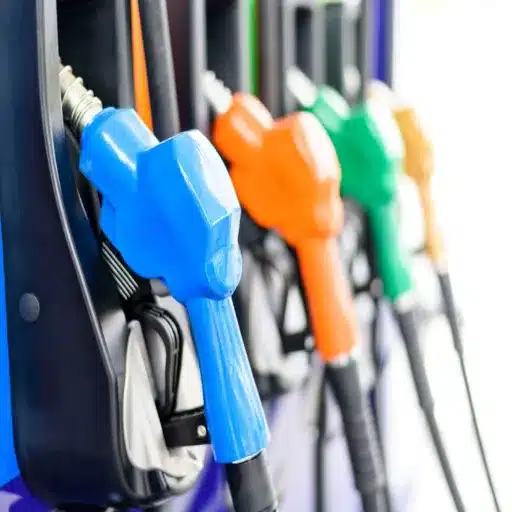
As an environmental protection and operational safety requirement, ships need to comply with the maritime fuel regulations. As per the IMO standards, they will have to use approved fuels, mainly VLSFO, or install an exhaust gas cleaning system (a scrubber) to meet the sulfur emission limits. Regular inspection and certification will be carried out to ensure compliance, along with harsh penalties awarded if there is a breach. Following unsafe practices of handling, storing, and using fuel may lead to accidents, so imposing safety protocols. The successful operation of ships would thus be safeguarded. These standards are in place to protect marine ecosystems while keeping international trade trustworthy.
Regulations for Fuel Dispensing Equipment
If I were to concisely address the regulations for fuel dispensing equipment, I would highlight the importance of having all such equipment comply with the international standards that help prevent fuel contamination and leaks. It is important that regular maintenance and inspections are made, in addition to safety protocols. The equipment shall furthermore be compatible with the low-sulfur fuels or systems approved for use on the vessels in question so as to comply with environmental protection standards.
Leak Detection and Prevention
Leak avoidance and attraction methods are employed to ensure safety and environmental compliance in fuel handling. Detection systems use state-of-the-art technology; examples include automatic tank gauging, vapor monitoring, and interstitial monitoring for double-walled tanks. Integrity testing of tanks and pipelines must be performed on a regular basis to ensure that potential weaknesses are removed promptly.
Prevention involves the use of corrosion-resistant materials, the installation of secondary containment systems to retain any fuel that might escape into the environment, and routine maintenance as a safeguard of the machinery. Training of personnel includes proper handling practices along with emergency response protocols, offering an added layer of protection against any leak. Combining good detection technology with preventive methods will considerably mitigate the hazards associated with fuel storage and dispensing.
Choosing Compliant Components and Kits
While selecting kits and components for a fuel storage and dispensing system, it is essential to certify regulatory compliance so as to ensure environmental and operational safety. For starters, verify that the components meet industry standards, including OSHA, EPA, and NFPA. They should be UL-listed or API-compliant; these miles of polymer guarantee the reliability and safety of the systems. Containment kits must be checked for spill prevention, overfill protection, and leak detection systems to limit the chances of any harm. Do consider high-quality materials that are compatible with the type of fuel stored to avoid corrosion or hazardous chemical reactions. In addition, try to leverage the expertise of manufacturers or suppliers of fuel storage systems so that the selected components provide for both functionality and compliance-worthy obligations.
Reference Sources
Consumer Protection Related to Dispensing Pump Manipulation in SPBU (Gas Station)
Frequently Asked Questions (FAQs)
What is a gas dispenser, and how does it operate?
A gas dispenser is used at fuel stations to dispense gasoline or diesel fuel into vehicles, so to speak, the gas pump. It works on the transfer of fuel from an underground storage tank into the gas tank of the vehicle using a fuel hose with an automatic fuel nozzle. In a very technical sense, the fuel is pushed by the pressure generated in the underground tank along with an accurate meter to measure precisely the amount of fuel dispersed so that customers are charged accordingly.
What type of fuels can one find at the fuel station?
Regular and premium unleaded fuel, diesel, and sometimes alternative fuels like kerosene and DEF (diesel exhaust fluid) are typically what fuel stations offer. Today, many modern fuel dispensers are equipped to dispense more than one type of fuel to give their customers a wider choice.
How does a fuel transfer pump differ from a gas dispenser?
A transfer pump is basically used for transferring fuel between containers, such as from a transfer tank to a vehicle. In contrast, a gas dispenser is intended for retail fuel dispensing at fuel stations, so there is a customer transaction involved as well as a means for fueling vehicles.
What is the importance of fuel management in gas stations?
Fuel management is extremely important for gas stations, as it involves tracking fuel inventory, optimizing the purchase of fuel, and placing the fuel under control of safety regulations. Efficient fuel management increases customer loyalty by minimizing downtime owing to shortages and ensuring reliable performance of the dispenser equipment.
Can you state the features of the Gilbarco Encore fuel dispenser?
The Gilbarco Encore fuel dispenser is heralded in the industry as being a technically advanced fuel dispenser with a user-friendly design. It has an LCD screen to clearly display transaction information, contactless payment options, and variable settings for fuel types. This unit offers a touch of class to the customer experience on the back of a sound performance well within industry standards.
What are the advantages of using an automatic fuel nozzle?
An automatic fuel nozzle has several favorable qualities that make the filling of vehicles easier and safer. Once the fuel tank is full, the automatic fuel nozzle shuts itself off, preventing spillage and overfilling. This helps build the confidence of customers by providing an easy and safe fueling experience and also helps to avoid any spills that could have occurred during fuel leakage, thus causing it to be a preferred choice in modern gas dispensers.
How can a gas station upgrade its fueling equipment?
A gas station can upgrade its fueling equipment by retrofitting the existing dispensers with the latest technology, including a new high-flow pump and digital meter. Upgrades would maximize efficiency, reduce downtime during repairs, improve customer service, and retain high customer patronage. Furthermore, additions of portable fuel options and submersible pumps can further diversify their service capacity.
What type of maintenance is required for fuel dispensers?
Fuel dispensers require regular maintenance so they will continue to operate efficiently and safely. Among the things you want to pay attention to include checking the fuel hose for leaks; ensuring the automatic fuel nozzle works correctly; and verifying the meter is accurately calibrated. Routine maintenance helps reduce downtime and prolong the lifecycle of equipment.
What is a fuel pump kit, and when is it necessary?
A fuel pump kit usually contains everything needed for fuel pump installation or repair; for example, filters, seals, and gaskets. It becomes necessary when a mind-faulty pump has to be replaced or upgraded with a higher specification option. For best practice, a fuel pump kit should be used to ensure installation is carried out to engineering standards and therefore provide reliable performance within the fuel dispensing system.

